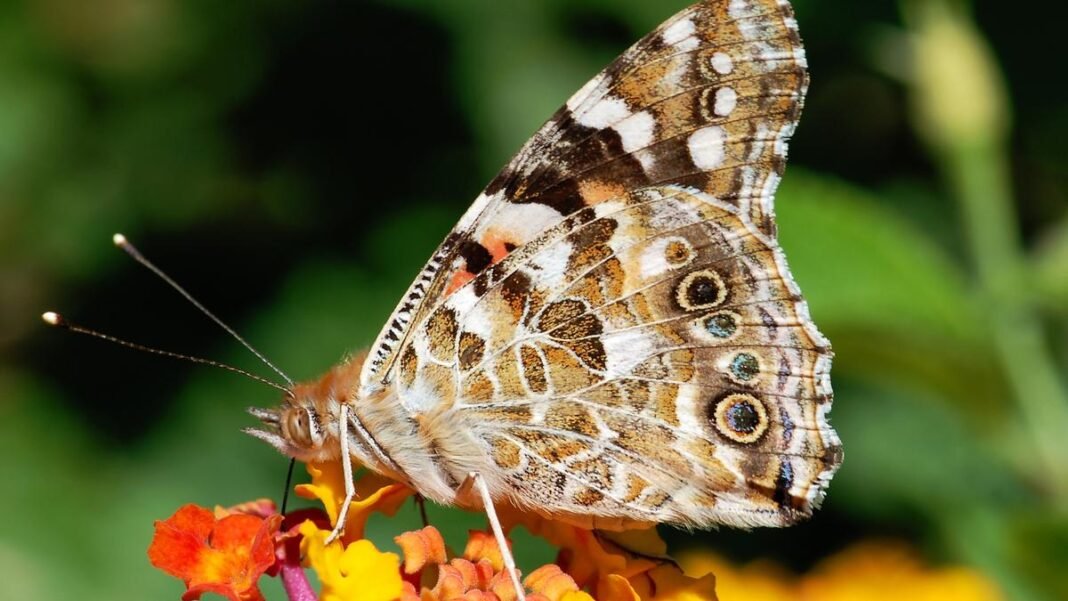Mysterious Migrations of the Painted Lady Butterfly: Unveiling the Secrets of their Long-Distance Flights
Summary:
Uncover the fascinating story of the painted lady butterfly, a species known for its remarkable ability to thrive in diverse climates and migrate long distances. Discover how scientists have cracked the code of their migrations, revealing the role of environmental conditions and genetic differences in shaping their travels.
Lead:
The painted lady butterfly’s migratory journeys are a phenomenon that has long intrigued scientists. Their ability to travel thousands of kilometers, crossing deserts and seas, is a testament to their remarkable adaptability. But what drives these butterflies to migrate, and how do they accomplish such feats without getting tired?
The Mysterious Case of Migration
For many years, scientists struggled to study insect migration due to technological limitations. However, the recent boom in genomics and tracking technologies has allowed researchers like Daria Shipilina to delve into insect migration with precision. Shipilina, an evolutionary biologist, is fascinated by how genes in an organism’s genome contribute to its observable traits, or phenotypes.
Key Highlights:
- Short- and long-distance migrants among painted lady butterflies don’t have significant genetic differences between them.
- Environmental conditions appear to influence the distances each member migrates.
- The painted lady butterfly’s migratory cycle spans eight to 10 generations, with each butterfly living for two to four weeks on average.
- The butterflies’ wings retain stable isotopes of hydrogen and strontium absorbed from food and water, allowing researchers to estimate their places of origin.
Is it a Family Business?
According to Shipilina, the painted lady’s migration is a "family business," with each cycle spanning eight to 10 generations. This multi-generational migration cycle is a unique feature of this species, distinguishing it from birds, which often return to the same breeding grounds at the end of their journeys.
The Secret to their Long-Distance Flights
The painted lady’s ability to thrive in diverse climates and migrate long distances is due to their remarkable adaptability. Their thoracic muscles are akin to those of a bodybuilder, with several adaptations for long-distance flight. They can develop high speeds and fly high, making them capable of covering vast distances.
Uncovering the Secrets of their Migration
Researchers have tracked the painted lady’s migration and behavior, collecting data over many years. They captured the butterflies at the end of their life cycle and analyzed their wings, which retain stable isotopes of hydrogen and strontium absorbed from their environment. By analyzing these isotopes, the researchers estimated the distance covered by each butterfly.
Challenging Assumptions
The study also found that wing size and shape didn’t seem to affect the migration distance. Some painted ladies estimated to have traveled 4,000 km had minimal wing-wear. These findings challenge assumptions that higher wing-wear suggests greater distance.
The Future of Butterfly Migration
Shipilina’s team is currently pursuing a project called ‘Butterfly Migration’ to further explore the mysteries of the painted lady’s migration. They hope to understand how environmental changes affect their migration patterns and how they will respond to climate change.
Conclusion:
The painted lady butterfly’s migratory journeys are a testament to their remarkable adaptability. By uncovering the secrets of their migration, scientists are one step closer to understanding the complexities of insect migration. Their findings have significant implications for our understanding of environmental changes and the impact of climate change on migratory species.
Keywords:
Painted lady butterfly, migration, genomics, environmental conditions, climate change, insect migration.
Hashtags:



